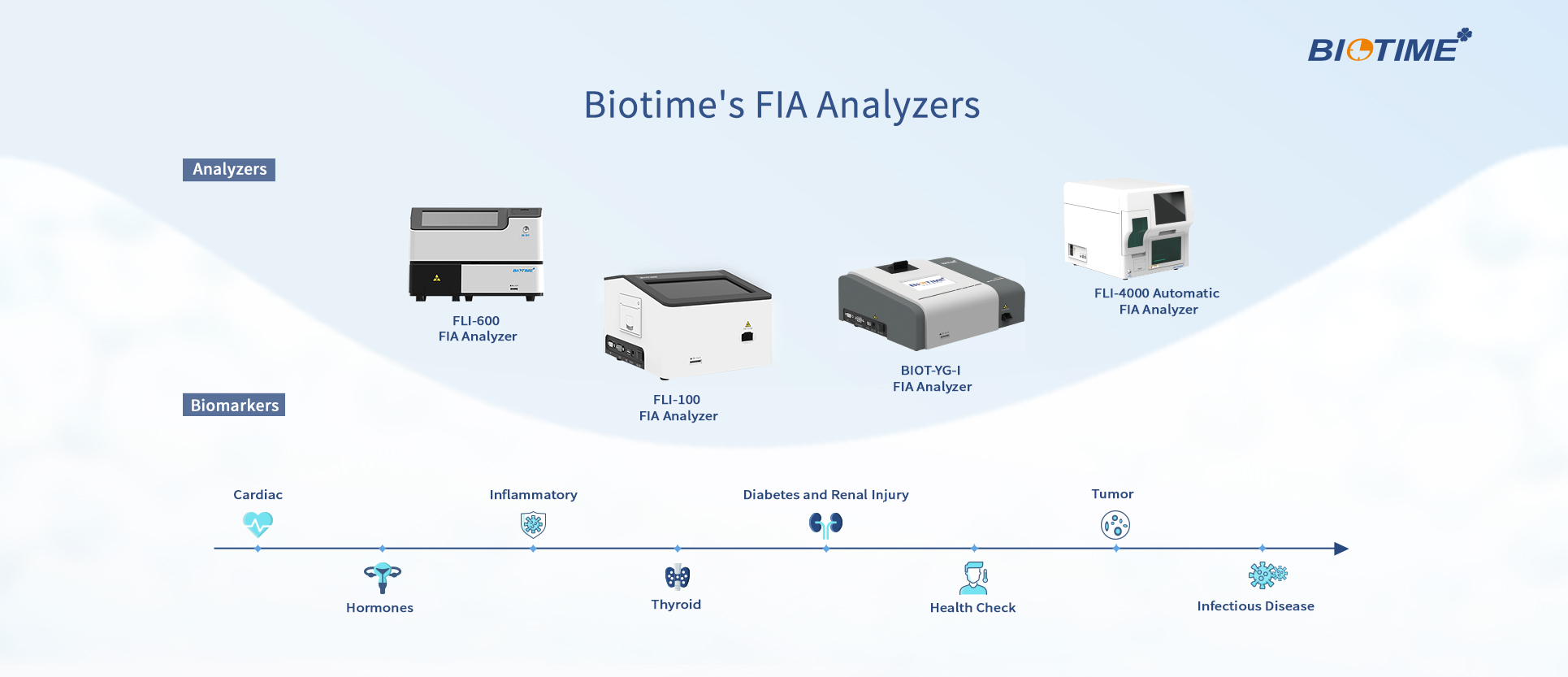INTRODUCTION
Immunoassay analysers are applied to a situation where one wants to detect or isolate a molecule within a mixture, usually using an antibody as a reagent. (Beckmancoulter, 2021) These devices perform a variety of tests including those targeting cancer, allergies, therapeutic drug monitoring and more. And they typically include an autosampler, a reagent dispenser, a washer, and a detection system. (Who.int, 2021)
Modern immunoassay analysers often come with advanced, user-friendly features such as touchscreen interface, easy-to-use software and ready-to-use reagents. With advanced analysers, laboratories can benefit from simple and trouble-free operation, workflow flexibility, fast turnaround times, and broad measuring ranges. (Block Scientific Inc, 2021)
TYPES AND VARIATIONS
Five types of immunoassay, enzyme immunoassay (EIA), radioimmunoassay (RIA), fluoroimmunoassay (FIA), chemiluminescent immunoassay (CLIA) and counting immunoassay (CIA), are generally used. Depending on configuration and levels of sophistication, as well as available testing options, different immunoassay analysers could vary greatly. (Martínez, 2021)
Radioimmunoassay
The radioimmunoassay is perhaps the oldest types of immunoassays. Here, a radioisotope is attached to an antigen of interest and bound with its complementary antibody. Then a sample with the antigen to be measured is added. It competes with the radioactive antigen, kicks it out of the binding spot and replaces it. After washing away unbound antigens the radioactivity of the sample is measured. The amount of radioactive signal is inversely related to the amount of target antigen. The health hazards of using radioactive substances caused a movement toward safer methods. (Martínez, 2021)
Counting immunoassay
In a counting immunoassay, polystyrene beads are coated with many antibodies complementary to the target antigen. During incubation the beads bind to multiple antigens and group together into a large mass. Some beads remain unbound. The entire solution is passed through a cell counter and only the unbound beads are counted. The number of unbound beads is inversely proportional to the amount of antigen. (Martínez, 2021)
Enzyme-linked immunosorbent assay
The Enzyme-Linked Immune Sorbent Assay, also known as ELISA, determines various entities such as the presence of antibodies to an infectious disease and also detects and measures antibodies in human samples as a reaction to specific antigens. ELISA-tests are commonly used to test the concentration of Vitamin D, insulin, COVID-19 or hepatitis antigens in samples. (Future Diagnostics, 2021)
Fluorescence and Chemiluminescence Immunoassays
Besides the use of immunoassays based on colour intensity to detect antibodies in specimens, detection can also be done by fluorescent tracers and light-generating molecules. These are called Fluorescent Immunoassay (FIA) and Chemiluminescence Immunoassay (CLIA). The basis of these immunoassays is a variant of ELISA. The substrate used does not generate colour but emits light. (Future Diagnostics, 2021)
FIA and CLIA are more sensitive than ELISA and are used to determine low concentrations of antibodies or antigens (HIV, COVID-19, Troponin I, TBI). (Future Diagnostics, 2021)
BIOTIME’S IMMUNOASSAY
Biotime is very familiar with the development of immunoassays. In fact, it has been our area of expertise since the beginning of the establishment, especially the use of Fluorescent Immunoassay. Fluorescence Immunoassay Analyzer offers the advantages of high accuracy, strong stability and fast results, all of which make it probably the most efficient way of immunoassay testing.
Biotime offers a range of immunoassay analyzers and comprehensive portfolio of assays, all of which can help optimize your laboratory's uptime, reliability and performance, thus, extend the services of your laboratory.

For more information of Biotime’s immunoassay, visit www.xiamenbiotime.com
Also, send me an enquiry via email if you’re interested, it’s baotai@xmbtsw.com
References
Who.int.
2021. [online] Available at:
Beckmancoulter.
2021. Immunoassay. [online] Available at:
Block
Scientific Inc. 2021. Learn More about Diverse Types of Immunoassay Analyzers.
[online] Available at:
Future
Diagnostics. 2021. The different areas of immunoassays - Future Diagnostics.
[online] Available at:
Martínez,
L., 2021. Different types of Immunoassays. [online] Sepmag.eu. Available at: